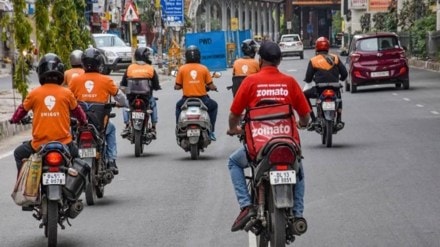By Anshul Prakash and Kruthi N Murthy
The gig economy in India has outpaced traditional forms of businesses, powered by delivery partners, drivers, technicians, creators and freelance professionals working with platforms and startups. For years, this workforce operated outside traditional labour protections. Until 21 November 2025, except in a few states, gig and platform workers had no formal entitlement to social security, minimum wages or protection from sudden disengagement.
The Code on Social Security, 2020 (Code), which has been brought into force, changes this landscape. It formally recognises gig and platform workers and authorises the Central and state governments to create schemes offering life and disability cover, accident insurance, health and maternity benefits, old-age protection and other welfare measures.
Aggregators must contribute between 1 to 2% of their annual turnover, capped at 5% of the amounts paid to gig workers, to a dedicated social security fund. The framework is significant, but its practical impact will depend heavily on how the proposed schemes are structured and implemented.
Lack of clarity in definitions
The Code defines a “gig worker” as someone working outside a traditional employer–employee relationship, and a “platform worker” as a person performing services through an online platform. However, the Code does not clarify what “outside traditional employment” means.
This lack of precision can lead to disputes about who is genuinely a gig worker and who may actually be an employee performing core functions under considerable control and supervision. Platforms with strong algorithmic oversight, performance ratings and penalties may blur the line between independent contractors and dependent workers, inviting inconsistent interpretations across industries.
Limited benefits and not equivalent to employment
It is important for organisations to note that while the Code formally acknowledges gig and platform workers, it stops short of giving them the same protections as regular employees.
The proposed schemes may provide important welfare benefits, but the Code does not mandate minimum wages, paid leave, job security, severance, protection from arbitrary termination, or prescribe entitlement to gratuity or other long-term benefits.
In effect, the Code offers a safety net but does not elevate gig workers to the status of employees. The substance of their protection will depend entirely on the future Central and State schemes, which are yet to be notified.
States that moved first, and the interplay between state laws and the Code
Before the Code became effective, a few states had already taken the lead in regulating gig and platform work. Rajasthan enacted the Platform-Based Gig Workers (Registration and Welfare) Act, 2023, and Karnataka issued the Karnataka Platform-Based Gig Workers (Social Security and Welfare) Ordinance, 2025. Both frameworks.
These states took early initiative to establish state-level welfare boards, mandate registration of aggregators, and require contributions to state-managed welfare funds, but their laws now coexist with the newly effective national framework under the Code. This overlap presents significant questions for platforms operating across India.
The Code provides for a centralised social security fund, while states like Rajasthan and Karnataka maintain separate state welfare funds under their statutes. This dual structure raises several concerns: whether aggregator contributions made under state laws will be offset against the central contribution or whether platforms may end up paying twice.
It is also unclear if workers will be entitled to benefits under both systems or whether the central framework will eventually replace or override the state laws. Unless harmonised, this could create a fragmented compliance landscape, particularly for national aggregators that must navigate different obligations depending on the state.
Impact on platforms and workers
lthough the aggregator contribution of 1 to 2% of turnover appears modest, it may significantly affect platform margins. Platforms may respond by passing costs to customers through higher service charges, reducing earnings or incentives for workers, or restricting the number of gig workers they engage. This may unintentionally reduce gig opportunities or lower take-home incomes for workers. The introduction of social security is welcome, but it may come with trade-offs that alter the economic model that allowed the gig economy to scale rapidly.
Khaitan comment
The SS Code being in force marks an important shift in India’s approach to gig and platform workers. It provides a long-awaited framework to extend basic social security to a segment of the workforce that has traditionally lacked protection. However, the Code is only a starting point. The effectiveness of this initiative will depend on the design of the forthcoming schemes, the clarity provided on state–central interactions, and the ability to implement the regime without undermining the advantages of gig work.
Gig work grew partly because of its flexibility, autonomy and ease of entry. Formalising the sector through social security contributions and welfare obligations is necessary, but it must be balanced with preserving the flexibility that workers and businesses value. The risk is creating a system that imposes regulatory and financial burdens without granting gig workers the full rights and protections of employment. Accordingly, the schemes to be prescribed by the respective governments will determine whether the SS Code becomes a meaningful step towards fairness for gig workers or a well-intentioned reform that fails to address practical realities.
(Prakash is Partner and Murthy is Principal Associate at Khaitan & Co)
